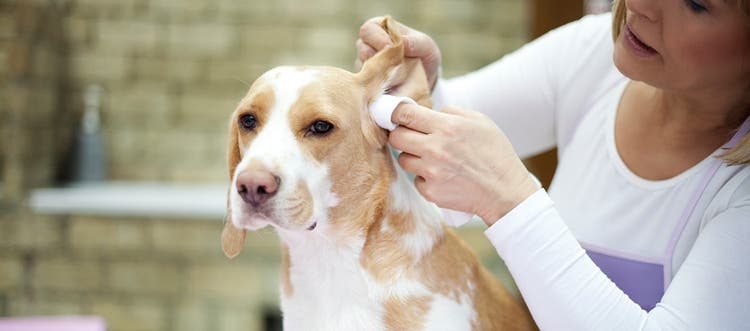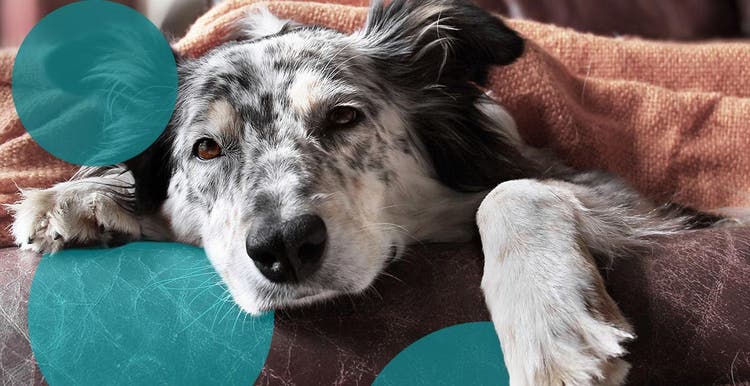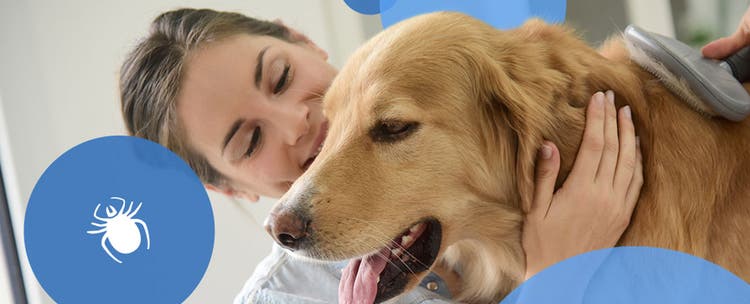If you have a dog with floppy ears or a pup that loves to play outdoors, you’ll probably have to deal with an ear infection at least once during their life. In fact, ear infections are the second-most-common reason dog owners visit their veterinarian. Let’s look at the common causes, symptoms and treatments for canine otitis externa, or ear infections in dogs.
What Is Otitis Externa in Dogs?
“Otitis externa” is a scientific term for inflammation of the ear; however, “otitis externa” and “ear infection” are often used interchangeably. Always take your dog to the vet if you think they have an injury or other concerning condition, including an ear infection.
What Causes Dog Ear Infections (Otitis Externa)?
While you may think skin in the ear is different than the skin on the rest of your dog’s body, it’s essentially the same — just with less hair and a few more glands. This means the same irritants that disrupt their normal skin, like allergies, parasites or underlying medical conditions, can also disrupt the ear’s natural balance. This can open the door for bacteria and yeast to flourish in the ear, causing infection and discomfort for your dog.
Although there’s no single answer to what causes ear infections in dogs, lifestyle, age, breed and overall health can play a role. Some dogs are more prone to ear infections than others, but any dog can get canine otitis externa.
Dog ear infection causes can include:
- Allergies (including food allergies)
- Ear mites
- Water in their ear(s) from swimming or bathing
- Getting something stuck in the ear
- Another disease that has an impact on the ear environment, such as thyroid disease
Which Dog Breeds Are More Likely to Experience Ear Infections (Otitis Externa)?
Some dogs are more susceptible to ear infections because of their breed or physical characteristics. For example, dogs with floppy ears are more likely to get an ear infection because their ears trap moisture that alters the normal environment in the ear canal. These breeds include:
- Golden retrievers
- Labrador retrievers
- Cocker spaniels
- Poodles
- West Highland terriers (Westies)
- Hound breeds
While these breeds may be more susceptible to infection, it doesn’t mean they have to suffer. Start by understanding the symptoms of dog ear infections, and work with your vet to develop a treatment plan.
What Are the Common Signs and Symptoms of Ear Infections (Otitis Externa) in Dogs?
Make an appointment with your vet if you see your dog exhibiting any of the following symptoms:
- Shaking their head
- Scratching their ears
- Ears that are sensitive to the touch
- Redness or a rash on the outside of the ear
- Odor in the ear
- Discharge from the ear
- Swelling of the ear
- Holding one ear down with a paw
How Will Your Veterinarian Treat a Dog Ear Infection (Otitis Externa)?
First, your vet will run a few tests to determine whether your dog has otitis externa, and will thoroughly clean your dog’s ears. If your dog has an ear infection, your vet may prescribe a topical medication or medicated ear cleaner, or they may administer a dog ear infection treatment. Come prepared to discuss the symptoms you’ve noticed. Your vet may ask some questions to determine the reason your dog developed an ear infection. Identifying the underlying cause can help limit future infections.
During your appointment, ask your vet about the efficacy of a one-dose dog ear infection treatment like Claro® (florfenicol, terbinafine, mometasone furoate) Otic Solution. Claro® features three active ingredients that fight harmful strains of yeast and bacteria for 30 days of relief in a single dose. This means your vet can diagnose and treat an ear infection in one appointment — no messy topical solutions or hiding pills in treats at home!
How Can You Help Prevent Ear Infections (Otitis Externa) in Dogs?
What causes ear infections in dogs can depend on their lifestyle, breed, age and overall health. External factors and disease can play a role as well. One common culprit? Allergies.
Unfortunately, some dogs tend to get ear infections over and over, regardless of preventive steps. In these situations, regularly cleaning their ears can be an important step in proactively managing ear infection signs and symptoms.
Preventing ear infections in your dog starts with working with a professional. Your vet can provide guidance, including how often you should clean your dog’s ears — and how to do so correctly. It’s a good idea to clean out your dog’s ears with a cotton ball (never use a pointed cotton swab) and an ear cleaner from a company that specializes in animal health.
Ear infections can be a pain to deal with, but knowing what to look for and when to take action can limit the discomfort your dog experiences. Treatments like Claro® Otic Solution can provide an easy, mess-free way to relieve painful symptoms and treat infection. Although some dogs are more susceptible to ear infections than others, fighting the infection and symptoms is more convenient with Claro®.

Claro® (florfenicol, terbinafine, mometasone furoate) Otic Solution
A one-dose ear infection treatment for dogs administered by your vet — no messy at-home treatments.
Related Articles
Indication
CLARO is indicated for the treatment of otitis externa in dogs associated with susceptible strains of yeast (Malassezia pachydermatis) and bacteria (Staphylococcus pseudintermedius).
Important Safety Information
Do not use in cats.
CLARO should be administered by veterinary personnel.
CLARO may cause eye injury and irritation. Splatter may occur if the dog shakes its head following administration. If contact with eyes occurs, flush copiously with water for at least 15 minutes. If irritation persists, contact a physician.
Do not use in dogs with known tympanic membrane perforation (ruptured eardrum). Adverse reactions may occur following administration of CLARO. Observe your dog for signs such as ear pain, irritation, vomiting, head shaking, head tilt, in-coordination, eye pain and discharge. Contact your veterinarian if any of these signs are observed.
For complete safety information, please see Claro product label or ask your veterinarian.







